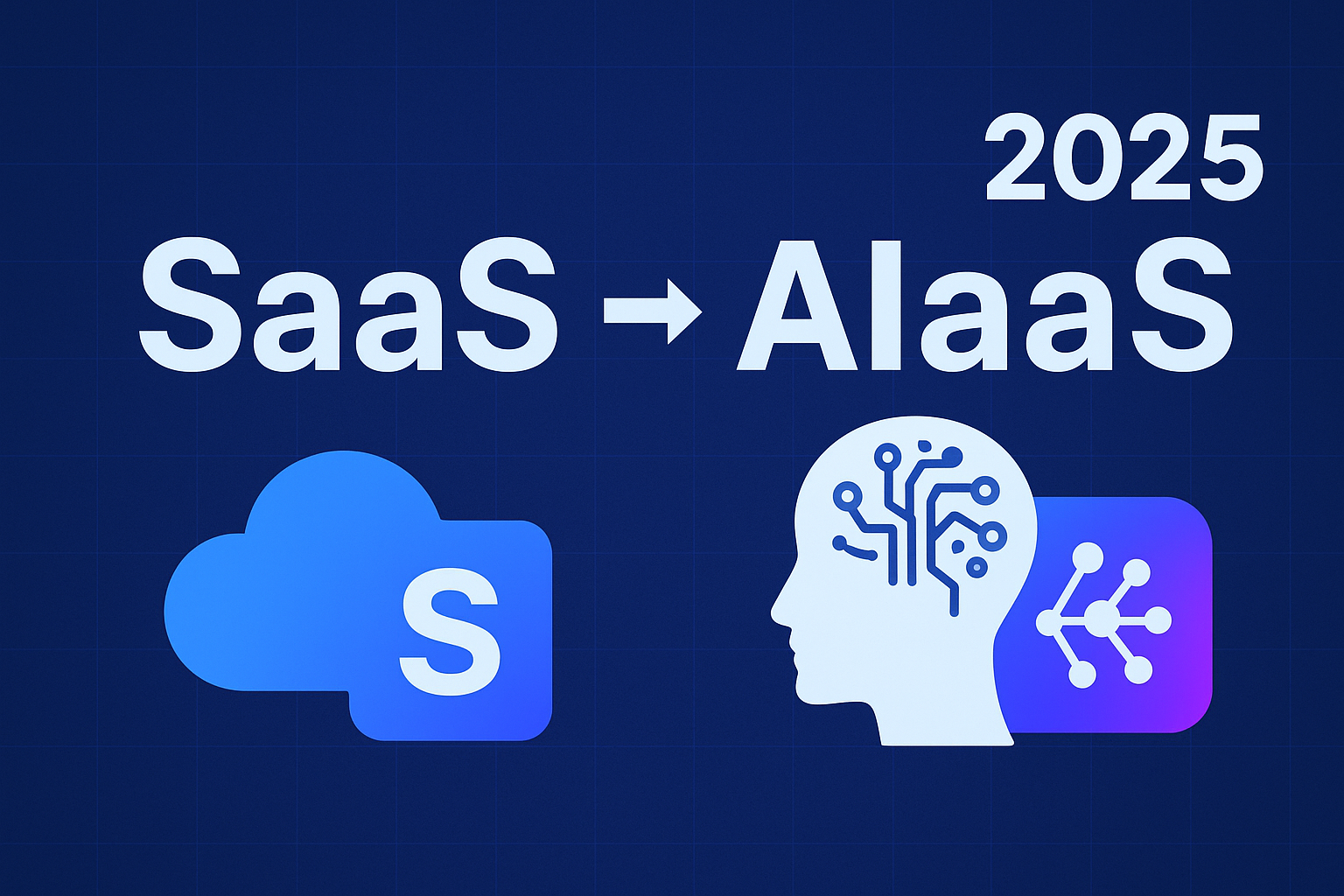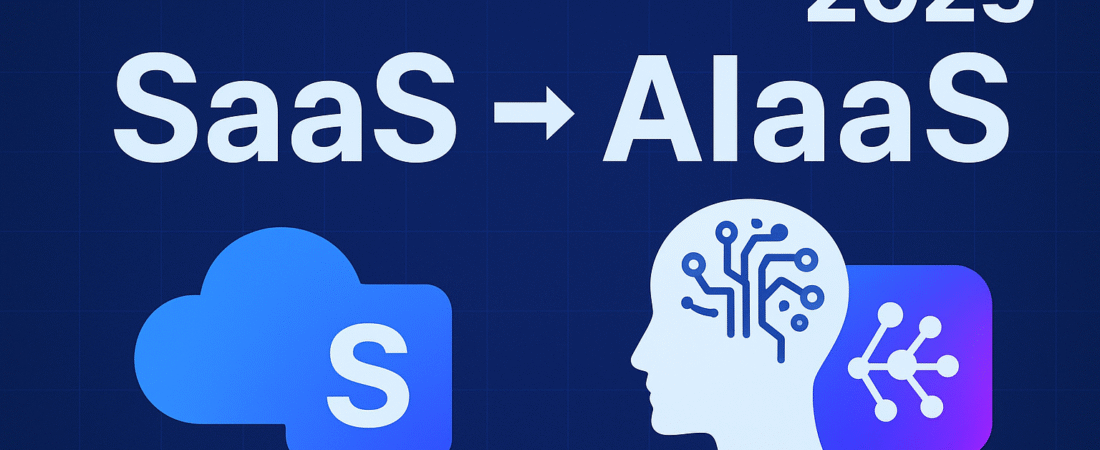
From SaaS to AIaaS: The Rise of AI-as-a-Service in 2025
Introduction: Why SaaS Alone Isn’t Enough in 2025
In the 2010s, Software-as-a-Service (SaaS) revolutionized the way startups and enterprises operated. Instead of buying expensive software licenses, companies could simply pay a subscription fee and access powerful tools in the cloud. SaaS democratized technology.
But in 2025, things are shifting again. Businesses don’t just want software, they want intelligent systems that can learn, automate, and adapt. That’s where AI-as-a-Service (AIaaS) comes in.
Instead of subscribing to static SaaS platforms, companies are increasingly subscribing to AI-first services, from chatbots and AI writers to fully agentic systems that replace entire workflows.
In this article, I’ll break down what AIaaS really means, how it’s different from SaaS, and why it’s becoming the new normal for startups and enterprises alike.
The Shift from SaaS to AIaaS – What Changed?
Let’s rewind for a moment:
-
2000s → Early SaaS Era: Tools like Salesforce and Dropbox introduced the SaaS subscription model.
-
2010s → SaaS Explosion: Companies like Zoom, Slack, and HubSpot dominated with cloud-first services.
-
2020s → SaaS Saturation: Businesses stacked too many SaaS subscriptions, leading to “SaaS bloat.”
-
2025 → AIaaS Emerges: Companies now prefer AI-driven platforms that automate tasks and scale intelligence on demand.
What changed?
-
Generative AI breakthroughs (OpenAI, Anthropic, Google DeepMind).
-
Agentic workflows that don’t just support users, they take action.
-
Flexible pricing (pay-as-you-go AI vs. rigid SaaS contracts).
What Is AIaaS (AI-as-a-Service)?
In simple terms:
👉 AIaaS is like SaaS, but with brains.
Instead of just subscribing to software, you subscribe to AI models, APIs, and intelligent agents that perform tasks for you.
-
A SaaS CRM helps you manage leads.
-
An AIaaS CRM agent actively nurtures leads, predicts churn, and personalizes outreach without human input.
It’s not just a tool, it’s a thinking assistant.
Core Components of AIaaS Platforms
Most AIaaS platforms in 2025 include:
-
APIs & Plug-and-Play AI – Businesses can integrate AI into their workflows with minimal coding. (Example: OpenAI API for text + image generation).
-
AI Agents & Workflows – Tools that don’t just answer questions but take action, like booking meetings or processing invoices.
-
Pay-as-You-Go Pricing – Instead of $50/user/month SaaS plans, AIaaS often charges based on API calls, tokens, or usage.
-
AI-Powered Apps – Ready-to-use applications powered by AI (e.g., Hostinger Horizons app builder).
Examples of AIaaS in Action
AIaaS is already everywhere, you’re probably using it without realizing.
-
Microsoft Azure AI → APIs for vision, speech, and NLP.
-
AWS AI Services → Scalable ML models for enterprises.
-
OpenAI API → Powers chatbots, AI agents, and content tools.
-
Hostinger Horizons → Let’s non-tech founders build apps with AI under $20/month.
I personally tested Hostinger Horizons to build a mock SaaS landing page. It generated both the design and copy in under an hour, something that would’ve cost hundreds of dollars with a traditional SaaS stack.
AIaaS for Startups: Why It Levels the Playing Field
Startups used to need:
-
A dev team to build apps
-
A design team to create branding
-
A marketing team to run campaigns
Now, with AIaaS, even one or two founders can launch and scale like a 10-person team.
Key benefits I noticed testing AIaaS tools:
-
Cost-effective: Pay for usage instead of locked monthly plans.
-
Rapid prototyping: Launch an MVP in days, not months.
-
Scalable intelligence: As your needs grow, your AI grows with you.
Business Value of AIaaS in 2025
Companies adopting AIaaS report:
-
30–50% faster workflows (automation + AI suggestions).
-
Mass personalization (AI can tailor messages to every customer).
-
Reduced SaaS bloat (replacing 5–6 SaaS tools with one AI-first platform).
For example, instead of paying separately for Grammarly, Jasper, and SEMrush, startups can use one AIaaS writing platform that handles grammar, content creation, and SEO suggestions together.
Challenges of AIaaS Adoption
Of course, AIaaS isn’t perfect. While testing different platforms, I ran into some challenges:
-
Data Privacy Concerns – Many startups hesitate to send sensitive data through third-party AI.
-
Vendor Lock-In Risks – Switching AI providers is harder than switching SaaS apps.
-
Hidden Costs – Pay-as-you-go sounds cheap, but can scale quickly if usage spikes.
This means startups need clear usage strategies to avoid surprise bills or compliance issues.
AIaaS vs SaaS: Key Differences Explained
Aspect SaaS (Software-as-a-Service) AIaaS (AI-as-a-Service) Functionality: Provides software features, provides intelligence & automation. Pricing: Fixed subscriptions, Pay-as-you-go, or hybrid. User Role: Humans do the work with tools. AI agents complete tasks automatically. Scalability: Based on licenses/users, based on usage & API calls. Examples: Zoom, HubSpot, Canva, OpenAI, AWS AI, Horizons
The Future of Workflows: Agentic AI + AIaaS
In 2025, the real disruption comes from agentic AI, AI systems that act independently.
Imagine:
-
A customer emails support → AI agent solves it instantly.
-
A founder says: “Launch me a landing page for X idea” → AI builds + deploys it.
-
A marketing team inputs a goal → AI runs ad campaigns end-to-end.
That’s not SaaS anymore. That’s AIaaS running your business.
Best AIaaS Tools to Try in 2025 (Affordable Options)
If you’re a startup founder, here are some entry-level tools worth trying under $20:
-
Hostinger Horizons → AI app & website builder.
-
Writesonic + Chatsonic → Content + chatbot with real-time data.
-
Tidio AI → Affordable AI customer support.
-
Canva Pro with Magic Tools → AI-first design workflows.
Each of these gives you AIaaS power without enterprise-level budgets.
Verdict: Why the Future Belongs to AIaaS
SaaS was revolutionary, but SaaS alone won’t cut it in 2025. Businesses don’t just want software; they want intelligence on demand.
AIaaS is cheaper, smarter, and more scalable than traditional SaaS. It allows startups to punch above their weight and enterprises to cut inefficiencies.
In short: SaaS gave us tools. AIaaS gives us teammates.
👉 And if you’re serious about building a business with these new AI-first strategies, I dive deeper into practical steps in my book Blueprint to Business Success, written in simple terms, based on lessons from top entrepreneurs.
